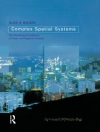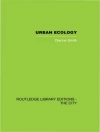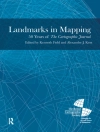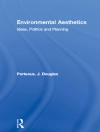Using Geospatial Technologies in Urban Environments simultaneously fills two gaping vacuums in the scholarly literature on urban geography. The first is the clear and straightforward application of geospatial technologies to practical urban issues. By using remote sensing and statistical techniques (correlation-regression analysis, the expansion method, factor analysis, and analysis of variance), the – thors of these 12 chapters contribute significantly to our understanding of how geospatial methodologies enhance urban studies. For example, the GIS Specialty Group of the Association of American Geographers (AAG) has the largest m- bership of all the AAG specialty groups, followed by the Urban Geography S- cialty Group. Moreover, the Urban Geography Specialty Group has the largest number of cross-memberships with the GIS Specialty Group. This book advances this important geospatial and urban link. Second, the book fills a wide void in the urban-environment literature. Although the Annals of the Association of American Geographers has recently established an editorship devoted to human environmental issues (“Nature and Society”), re- tively few of the articles in this section of the journal have focused specifically on urban-environmental topics. Likewise, of the textbooks in urban geography p- lished over the past decade (Knox, 1994; Pacione, 2001; Kaplan, Wheeler, and Holloway, 2004), none has offered a single chapter on urban-environmental qu- tions, and only passing references to such topics as urban heat islands.
Tabela de Conteúdo
Applying Geospatial Technologies in Urban Environments.- Remote Sensing of Impervious Surfaces and Building Infrastructure.- Policy Implications of Remote Sensing in Understanding Urban Environments: Developing a Wetlands Inventory for Community Decision-Making in Lucas County, Ohio.- Making Spatial Data Usable to the General Public: a Case Study in Tax Mapping.- Modeling Human-Environment Interactions.- The Relationship Between Urban Leaf Area and Summertime Household Energy Usage.- The Urban Environment, Socioeconomic Conditions, and Quality of Life: An Alternative Framework for Understanding and Assessing Environmental Justice.- Image Homogeneity and Urban Demographics: An Integrated Approach to Applied Geo-techniques.- Local Government Perceptions of Urban Forestry.- Satellite Remote Sensing of Urban Heat Islands: Current Practice and Prospects.- Remote Sensing as a Program Assessment Device: The case of Urban Forestry and the Competition for Local Investment.- Urban Sprawl Detection Using Satellite Imagery and Geographically Weighted Regression.- Satellites, Census, and the Quality of Life.- Urban Environmental Approaches: Policy, Application & Method.












